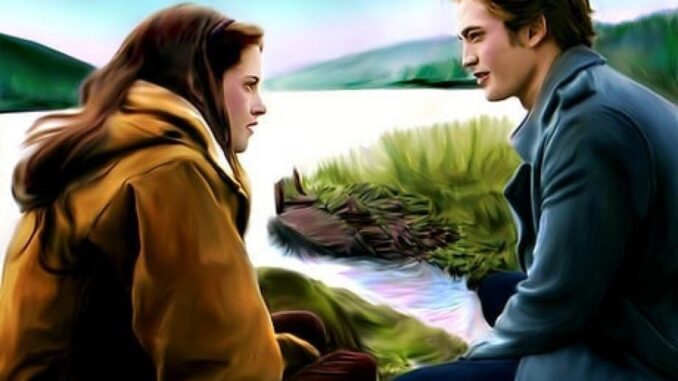
Real Love or a Fantasy Bond? The Appeal of the ‘Twilight’ Saga
The love depicted in “Twilight” is a figment of fantasy — a co-dependent, hungry union in which two people expect to be mutually rescued and bound for eternity.
The latest “Twilight” movie, “Breaking Dawn,” is already breaking records. Young fans clamored and camped out on dirty sidewalks for hours (even days) to make it to last week’s midnight premiere. Walking past one such line, I noticed a father dropping off a shrieking group of dressed up 15-year-old girls from a stretched hummer, rented just for the occasion. For many, the anticipation of attending a “Twilight” premiere is likened to that of preparing for a high school prom. But teens aren’t the only ones captivated. Audiences of all ages are hooked, guiltily or not, to the fanatical, addictive, and utterly over-the-top love between the film’s lead characters. So what is it about this solemn, interspecies affair that so appeals to the masses?

To put it simply, vampires and werewolves aren’t the only element of fantasy we are taken with. It is the instant and eternal attraction between Edward and Bella, two somber teens, one human and one vampire, pulled together inexplicably against all forces of danger and all rules of logic. Edward’s desire for Bella is so ravenous in nature that he literally craves her blood above that of any other, while after a fleeting encounter, Bella is so taken with Edward that she can’t imagine her existence without him.Is this the model of love we should teach our kids to strive for? Maybe not, but its appeal is closer to home than we may think. Fantasy and fairy tales tell us stories of the perfect love, the flawless soul mate, and the uncontrollable wave of desire that never seems to ride out. While the thought of happily ever after with someone you’ll love forever isn’t a bad goal to strive for, the trouble comes when we start putting all our security and identity into that person. Making ourselves vulnerable to love is one thing, but losing ourselves in fantasy is another.
Falling in love can mean opening yourself up to new experiences, feeling free, spontaneous, generous and differentiated from your past. Falling into fantasy can mean forming a connection that isn’t based on real substance. The instant and addictive attractions like that depicted so intensely in “Twilight” are not always based on the qualities and reality about a person or the connections that would lead to a real and lasting relationship. Instead, they may be based on a draw toward fantasy, a false sense of being completed or an innate desire to merge one’s identity with another. They can also be based on emotional hunger toward a partner, or the illusion of getting safety and immortality through “love” and walking off into the sunset together forever.So why are we drawn to fantasy over reality when it comes to intimacy? Real relationships show us that human beings are well, human. They carry battle wounds and emotional baggage that heavily weigh on their closest relationships. Even when we do find someone with whom we share a deep and meaningful connection, we tend to struggle through real issues. Serious relationships challenge us. The closer we get to someone, the more we can expect to face our own defenses, an inner resistance we have to getting too close or caring too much. Feeling love from someone else can be the best feeling in the world, but it can also challenge us on a deeper level, going against negative beliefs about ourselves we hold at our core and forcing us to face the pain of feeling deeply for someone else.

What we often do to protect ourselves against the challenges that arise with real love is form what my father psychologist Robert Firestone termed a “Fantasy Bond.” The fantasy bond is a connection built out of fears from danger and even from death that we often experience at an unconscious level. This bond substitutes real feelings of love, respect, and spontaneity with an illusion of connection, a focus on form over substance, and a false sense of security and completion by another person.
When we form a fantasy bond, we become less and less like two independent individuals who feel genuine attraction to each other. Instead, we start to fuse our identity with the person we care for, relying on them to give us value and make us feel safe. Take “Twilight”‘s Bella, for example. This teenage heroine doesn’t believe life holds any meaning without vampire Edward. He is her protector from danger, her companion against isolation and her ticket to literal immortality.
The main characters in the film will go to any end for each other. When separated, Bella even repeatedly cheats death in hopes that Edward will appear to save her. Most of us hold parts of us that want to be saved in a relationship, rescued from past hurts, protected from feeling alone, and even saved from death symbolically, or at least dying alone. The trouble is that projecting these qualities onto o
